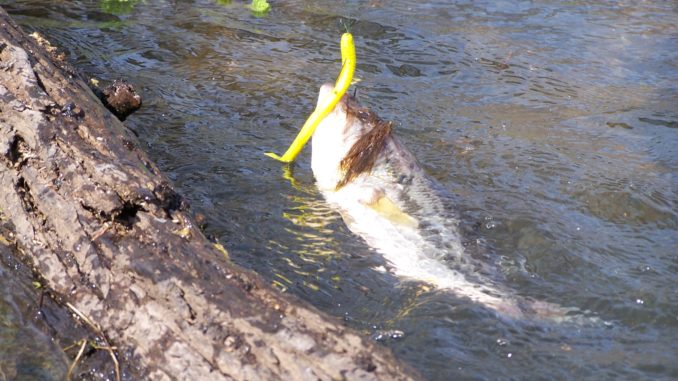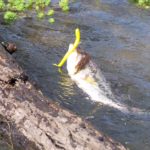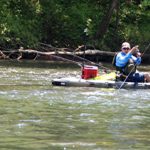
Look for the coolest, moving water in August
If you are a diehard kayak angler, you often find yourself lying awake at night during the spring and fall, dreaming about all of the water in the Carolinas and wondering when you’ll find the time to fish all of it.
Most don’t do that this month. In August, you look at the thermometer and wish there were a couple of places you could go where you could catch a couple of fish without boiling them in the hot water.
Kayak anglers who fish through the winter understand that only about 10 percent of the water is going to hold 90 percent of the fish. The same can be said for the summer, and looking at things from the fish’s perspective is the first step this month.
Here are a few suggestions on where kayak anglers can find the best fishing during the dog days:
The term “water-inflow areas” covers a broad spectrum of scenarios, but in this case, it refers areas where water is entering a larger body of water. Typically, this includes tributary creeks and tailrace areas from an adjacent body of water.
The common factor is better water quality derived from cooler water entering a lake. Cooler may be a relative term; two or three degrees can make a big difference to the fish. In the case of a tailrace where water is released from the depths of an upper lake, that difference might be 10 to 15 degrees or more. Incoming water will also contain more dissolved oxygen from turbulence, and that will draw both forage and their predators.
Because August tends to be more drought-prone than other time, low water levels may expose shoals or rocks that prevent access from larger boats, making the go-anywhere, car-top kayak the perfect vessel. A word of caution; however, in water-release areas, turbulence and water flow can come on quickly and cause unsafe conditions in a matter of minutes. Always check with local authorities for water-release schedules and heed warnings before water releases.
Heading to the coast, tidal flows move large amounts of saltwater, even in the back reaches of marsh areas, but August is typically a better time to fish near the ocean and off the beach. Like freshwater inflows, ocean water coming in brings better water quality and frequently, better fishing.
Some kayakers may prefer to go with the flow and fish with the current, while others may prefer to anchor and spot-fish certain areas. These areas require some advanced skill levels, especially where strong currents and undertows are involved, so it’s best to fish with a buddy and utilize proper safety measures when tackling the open ocean and inlets.
August is also a great time to fish one of the many river systems that stretch across the Carolinas. River fish, whether bass, panfish, catfish or even saltwater species in brackish areas, will pick ambush spots out of the direct flow of water and attack prey that moves the current past.
Float-tripping from one spot to another downstream will require some coordination — at least two vehicles and at least one more angler — but it can provide some great fishing with very little paddling involved. Simply go with the flow, stopping along the way to fish likely areas, and you don’t have to paddle back upstream against the current.
The last suggestion has nothing to do with moving water but has a lot to do with fishing high success areas. Few areas offer more confidence fishing that small ponds, lakes or lagoons.
Fishing in a small, landlocked area offers the kayak angler confidence that the fish are there; you just have to figure out how to get them to bite. Even though a pond, either saltwater or freshwater, may appear to be relatively stagnant, finding water-inflow areas is probably going to show a hot spot on that body of water. Another suggestion is to look for the deepest area of the pond and fish low and slow in the deeper water. Fishing these areas early in the day, late in the day, or even at night can also produce better results
Whether you are fishing saltwater or freshwater, it’s hard to beat live baits when the water is hot. Once water temperatures reach 80, both saltwater and freshwater fish can become sluggish. Few will chase an artificial bait, so presentations need to be slowed down and baits put right on the fish. Take advantage of any stained or turbid water created by moving water and use that to your advantage to trick fish with artificial lures.
Finally, fatal accidents involving kayakers and kayak anglers have been in the news this summer. The unfortunate common denominator in these events was paddlers who were not wearing PFDs.
Hot weather and warm water is no excuse for not wearing a PFD. Having it in the boat will not save you in a situation that occurs before you have time to react. Summer is also a great time to practice safety skills that can be used year-round, especially rolling your boat and getting it turned back over in deep water.






Be the first to comment